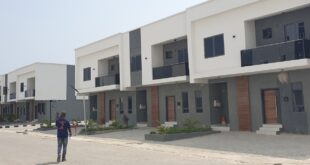Global remittances are projected to decline sharply by about 20 percent in 2020 due to the economic crisis induced by the COVID-19 pandemic and shutdown, the World Bank has predicted. “The projected fall, which would be the sharpest decline in recent history, is largely due to a fall in the wages and employment of migrant workers, who tend to be more vulnerable to loss of employment and wages during an economic crisis in a host country,” the Bank said in its latest report.
Remittances to low and middle-income countries (LMICs) are projected to fall by 19.7 percent to $445 billion, representing a loss of a crucial financing lifeline for many vulnerable households.
“Remittances are a vital source of income for developing countries. The ongoing economic recession caused by COVID-19 is taking a severe toll on the ability to send money home and makes it all the more vital that we shorten the time to recovery for advanced economies,” said World Bank Group President David Malpass.
Remittance flows are expected to fall across all World Bank Group regions, most notably in Europe and Central Asia (27.5 percent), followed by Sub-Saharan Africa (23.1 percent), South Asia (22.1 percent), the Middle East and North Africa (19.6 percent), Latin America and the Caribbean (19.3 percent), and East Asia and the Pacific (13 percent).
Remittances to Sub-Saharan Africa registered a small decline of 0.5 percent to $48 billion in 2019. Due to the COVID-19 crisis, remittance flows to the region are expected to decline by 23.1 percent to reach $37 billion in 2020, while a recovery of 4 percent is expected in 2021.
The anticipated decline can be attributed to a combination of factors driven by the coronavirus outbreak in key destinations where African migrants reside including in the EU area, the United States, the Middle East, and China. These large economies host a large share of sub-Saharan African migrants and combined, are a source of close to a quarter of total remittances sent to the region.
Remittance costs highest to Sub-Saharan Africa
Sending $200 remittances to Sub-Saharan Africa cost 8.9 percent on average in the first quarter of 2020, a modest decrease compared with the average cost of 9.25 percent a year before. The most expensive corridors are observed mainly in the Southern African region, with costs as high as 20 percent. At the other end of the spectrum, the less expensive corridors had average costs of less than 3.6 percent.
“Quick actions that make it easier to send and receive remittances can provide much-needed support to the lives of migrants and their families. These include treating remittance services as essential and making them more accessible to migrants,” said Dilip Ratha, lead author of the World Bank report.
Remittances are a lifeline to millions of families in Africa and other recipient regions of the world as they help support the elderly, pay for education and healthcare and provide seed capital to small business startups. The decline in remittances will exacerbate poverty and social hardship in the recipient countries, which are already suffering from the fallout of anti-COVID-19 lockdown measures.
Felix Dappah with World Bank report
—–
The Migration and Development Brief and the latest migration and remittances data of the World Bank are available at www.knomad.org.
 THE AFRICAN COURIER. Reporting Africa and its Diaspora! The African Courier is an international magazine published in Germany to report on Africa and the Diaspora African experience. The first issue of the bimonthly magazine appeared on the newsstands on 15 February 1998. The African Courier is a communication forum for European-African political, economic and cultural exchanges, and a voice for Africa in Europe.
THE AFRICAN COURIER. Reporting Africa and its Diaspora! The African Courier is an international magazine published in Germany to report on Africa and the Diaspora African experience. The first issue of the bimonthly magazine appeared on the newsstands on 15 February 1998. The African Courier is a communication forum for European-African political, economic and cultural exchanges, and a voice for Africa in Europe.






















